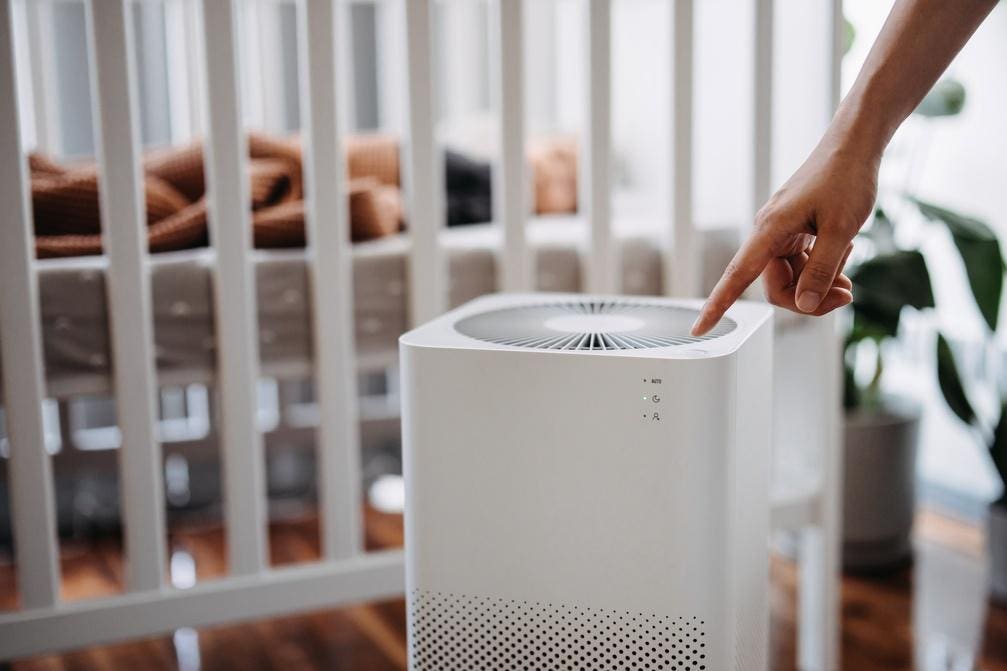Sissi Liu, CEO/Cofounder, Metalmark Innovations.
As we navigate 2025, indoor air quality (IAQ) has become a pressing concern for businesses and organizations. Let’s examine current IAQ challenges in the U.S., highlighting traditional contaminants and emerging threats that present both challenges and opportunities.
Current IAQ Landscape
Indoor air quality in the U.S. has reached a critical inflection point in 2025. Americans spend much of their time indoors, where pollutant concentrations can be 2 to 5 times higher than outdoor levels, according to the EPA. The IAQ market has responded accordingly, with the smart air purifier segment alone projected to grow to $17.7 billion by 2032, expanding at a CAGR of 10.1%. This growth reflects increasing awareness of IAQ’s impact on health, productivity and well-being, despite being largely unregulated by federal and most state governments.
PM2.5 (Fine Particulate Matter)
PM2.5, or fine particulate matter 2.5 microns or smaller, is a major IAQ concern due to its ability to penetrate deep into the lungs. These particles originate from combustion, cooking, smoking, outdoor pollution and more. Long-term exposure is linked to respiratory diseases, cardiovascular issues and higher mortality rates.
Airborne Pathogens: Emerging And Resurgent Threats
Airborne pathogens remain a public health challenge, with Covid-19, novel avian influenza, measles resurgence and a severe flu season impacting IAQ considerations.
• Covid-19: While no longer the dominant public health crisis, periodic variant-driven surges persist.
• Severe flu season: The 2024–2025 flu season has been among the deadliest in over a decade, with widespread hospitalizations and fatalities.
• Measles resurgence: Due to declining vaccination rates, measles—more contagious than Covid-19—is making a comeback.
• Novel avian influenza: Emerging strains of avian flu raise concerns over human transmission potential.
Volatile Organic Compounds And Semi-Volatile Organic Compounds
Volatile organic compounds (VOCs) remain a significant concern for IAQ, originating from everyday materials such as paints, cleaning products, adhesives, furnishings and more. These compounds can contribute to respiratory issues, headaches and long-term health risks.
In addition to VOCs, semi-volatile organic compounds (SVOCs) are gaining attention. They are found in many products and sources and tend to linger, adhering to surfaces and dust particles, leading to prolonged exposure. This makes their mitigation more complex and underscores the need for comprehensive IAQ strategies.
Allergens
Allergens continue to affect the health and well-being of millions of Americans each year. Many common triggers can be found in everyday environments such as homes, schools and workplaces. Substances like mold, dust mites, pet dander and pollen are known to contribute to various respiratory issues, particularly for individuals with asthma or allergies.
These allergens can accumulate in carpets, furniture, bedding and ventilation systems, making it challenging to maintain an allergen-free environment. Exposure to these irritants can lead to symptoms such as congestion, itchy eyes and even severe asthma attacks, illustrating the importance of proper allergen management and mitigation strategies.
Emerging Threats
Wildfire Smoke
Wildfire smoke has become one of the leading IAQ challenges of 2025, with its health risks extending far beyond traditional air quality pollutants like PM2.5. The majority of wildfire smoke particles measure 0.1 to 0.3 microns, posing an even greater threat as they can penetrate deep into the lungs and bloodstream, and reach vital organs, potentially causing systemic inflammation and long-term health problems.
In addition to particulates, wildfire smoke contains a complex mix of toxic gases, including carbon monoxide, ozone and VOCs, such as benzene and formaldehyde. These pollutants exacerbate respiratory conditions like asthma and bronchitis, and may contribute to neurological and developmental disorders. As wildfires become more intense, frequent and widespread, understanding the true nature of wildfire smoke and its composition is crucial for improving public health responses.
Microplastics
Microplastics, once believed to be confined to oceans and landfills, are now in the air we breathe. These particles are released from synthetic fabrics, plastic products, vehicle tires and more. Studies show that inhaled microplastics bypass respiratory defenses, disrupt cellular functions and have even been found crossing into the placenta during pregnancy. Furthermore, they can serve as vectors for other pollutants, carrying harmful pollutants deep into the lungs and organs. More research is necessary to fully understand the extent of airborne microplastics’ impact on human health and the environment.
Market Implications And Opportunities
For businesses providing IAQ solutions and building services, these challenges present significant opportunities:
• Advanced filtration: The multilayered landscape is driving demand for comprehensive filtration systems. For example, the need for high-efficiency particulate air (HEPA) filtration is growing.
• Low-VOC and no-VOC materials: Demand for low-VOC building materials continues to expand.
• Smart IAQ monitoring: Real-time air quality monitoring devices integrated with smart air cleaning and ventilation systems are becoming more commonplace.
• Wildfire-ready building envelopes: Products designed specifically to prevent wildfire smoke infiltration have emerged as a distinct category.
The indoor air quality landscape of 2025 is more complex than ever before, with a mix of challenges and opportunities. Well-known concerns about pathogens, PM2.5, VOCs and allergens now share attention with emerging threats from wildfire smoke, microplastics and more. For businesses offering IAQ solutions and services, the ability to address this multifaceted challenge will be a competitive advantage in the years ahead.
The most successful companies will be those that can provide integrated solutions addressing both traditional and emerging IAQ concerns, backed by rigorous testing and transparent communication about performance and safety metrics. As regulatory frameworks and standards evolve, staying ahead of compliance requirements while meeting growing consumer awareness will position forward-thinking companies for success in this market.
Forbes Business Council is the foremost growth and networking organization for business owners and leaders. Do I qualify?
Read the full article here











